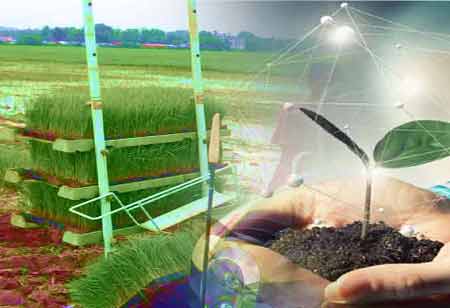Thank you for Subscribing to Agri Business Review Weekly Brief
Innovating Crop Protection for a Sustainable Future
The global Crop Protection Chemicals Market is presently experiencing a notable upsurge in demand, primarily propelled by the imperative necessity for food security

By
Agri Business Review | Tuesday, October 31, 2023
Stay ahead of the industry with exclusive feature stories on the top companies, expert insights and the latest news delivered straight to your inbox. Subscribe today.
Embracing innovation, reducing environmental impact, and ensuring compliance with regulatory measures are crucial to sustaining the growth of the crop protection industry and securing the future of global food production.
FREMONT, CA: The global Crop Protection Chemicals Market is presently experiencing a notable upsurge in demand, primarily propelled by the imperative necessity for food security and the intricate challenges presented by the burgeoning global population, projected to reach 9.8 billion by the year 2050. As arable land continues to diminish, the task of harmonising these multifaceted issues becomes increasingly intricate, underscoring the escalating requirement for enhanced crop yields.
Recent research suggests that developing economies are anticipated to witness a reduction of more than 60 per cent in arable land per capita. In this context, crop protection chemicals have emerged as the most cost-effective means of augmenting crop quality and yield. The industry has been undergoing rapid evolution, marked by advancements in product offerings, efficacy, and regulatory frameworks. Currently, the crop protection chemicals sector boasts an extensive portfolio, encompassing more than 800 active ingredients, signifying a substantial augmentation from the meagre 100 available during the late 1970s. Within this array, herbicides, fungicides, and insecticides stand out as the most extensively employed categories on a global scale.
In the previous years, the crop protection chemicals market was appraised at a value of USD 64.3 billion, with projections indicating an ascent to USD 83.5 billion by the year 2025. The critical role of herbicides in regulating weed proliferation, which has the potential to encroach upon available crop acreage and diminish yield, cannot be understated. It is pertinent to mention that contemporary herbicides are meticulously engineered for high selectivity, minimising their impact on overall plant growth.
Fungicides hold the second position in global consumption. Fungal infections pose a substantial threat to crops, with research indicating the annihilation of no less than 100 million tons of rice, wheat, corn, and soybeans annually. Without the application of fungicides, the yield of a significant proportion of fruits, vegetables, and cereals could potentially witness a staggering reduction within the range of 60 per cent to 70 per cent.
The category of grains and cereals, with a particular emphasis on staples such as wheat, rice, and corn, constituted the largest segment in the consumption of crop protection chemicals.
The global market for crop protection chemicals is poised to assume a pivotal role in the advancement of sustainable agricultural practices. The adoption of cutting-edge technologies has garnered significant momentum across diverse facets of agriculture, encompassing activities such as precision spraying and efficient harvesting. Within this evolving landscape, digital platforms have emerged as valuable resources, offering enhanced agronomic guidance to address issues related to fungi and weed management. Furthermore, the proliferation of the Internet of Things (IoT) in the agricultural sector represents a transformative force, with the potential to revolutionise farming methodologies and enhance overall agricultural output. The integration of IoT technology enables real-time, on-field pest management, providing farm proprietors with the ability to closely monitor pest proliferation and promptly institute appropriate remedial measures based on the insights and analytics at their disposal.
Integrated Pest Management (IPM) has arisen as a highly effective approach in the realm of sustainable agriculture. This comprehensive strategy amalgamates a variety of pest control techniques, encompassing chemical, physical, biological, and cultural methods, all strategically deployed to combat the challenges posed by weeds, fungi, and insects. Notably, governments across the globe are increasingly incorporating IPM principles into their agricultural policies, thereby striving to bolster crop yields and minimise the adverse environmental impact associated with conventional agricultural practices.





